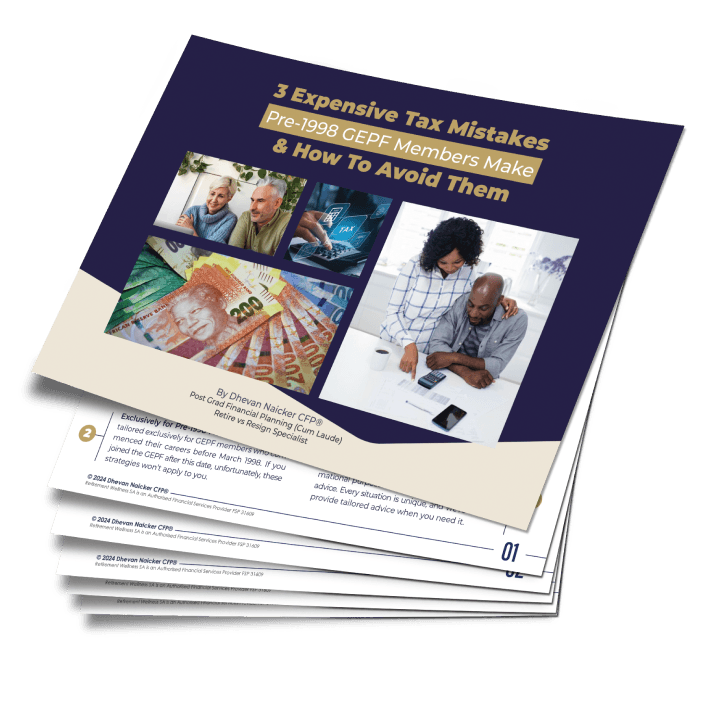Planning your resignation as a government employee can feel like navigating uncharted territory. Should you retire or resign? What steps do you need to take to ensure financial security and peace of mind? Imagine having a crystal ball to guide you in planning the perfect resignation. While we can’t offer a crystal ball, we can provide tried-and-tested strategies to help you plan effectively.
In this blog, we’ll share the five secrets to a well-planned resignation, inspired by Amy, a government employee who followed our guidance to the letter. Amy’s journey is a testament to the power of meticulous planning. Today, she enjoys financial stability, zero debt, no tax burden, and growing savings—all while living comfortably. Let’s dive into these secrets so you can plan your own perfect resignation.
Secret 1: Avoid Constant Changes
One of the keys to Amy’s success was her willingness to commit to a solid plan. Frequent changes to your resignation strategy indicate poor initial planning. Imagine this scenario: a cardiologist performs heart surgery and plans every detail meticulously. Post-surgery, there’s no need to reopen the patient unless complications arise. Similarly, financial planning should be thorough enough at the outset to avoid constant revisions.
When working with Amy, we made sure her tax planning, investment strategy, and legacy considerations were meticulously addressed upfront. This comprehensive approach ensured there was no need for frequent adjustments, saving her time and worry.
Secret 2: Comprehensive Tax Planning
Tax planning is often overlooked but is crucial to a successful resignation. In Amy’s case, we implemented three levels of tax planning:
- Basic Tax Planning: Ensuring no tax was paid when funds were transferred into approved investments.
- Advanced Tax Planning: Calculating pre-1998 contributions to minimize taxes on lump-sum withdrawals.
- Expert Tax Planning: Addressing estate taxes to protect her portfolio for future generations.
This multi-layered approach safeguarded Amy’s finances, allowing her to maximize her savings while keeping tax liabilities at bay. If your financial planner isn’t addressing tax planning on all these levels, it might be time to reconsider your options.
Secret 3: The Perfect Investment Strategy
Creating a perfect investment strategy involves more than choosing a fund. It’s about:
- Analyzing market conditions: Avoiding losses during market downturns, like the initial impact of COVID-19.
- Calculating costs: Factoring in fees and charges.
- Assessing income needs: Aligning investments with your lifestyle and goals.
By planning Amy’s investment strategy before any money was committed, we ensured her capital started growing immediately. This proactive approach minimized risk and set her up for long-term success.
Secret 4: Secure an Income for Life
Financial freedom means having enough income to cover your needs without worrying about running out of money. Amy wanted control and flexibility, so we structured her income to be adjustable every 12 months. This approach allowed her to adapt to life’s uncertainties while ensuring her long-term financial stability.
Behind the scenes, we planned for decades ahead to ensure her funds wouldn’t deplete, but our primary focus was on her immediate 12-month needs. This dual-layer strategy gave Amy confidence in her financial future.
Secret 5: Monthly Updates
Regular updates are the backbone of a well-managed resignation plan. Imagine receiving monthly statements showing consistent growth in your investments. Transparency builds trust and ensures any potential issues are addressed promptly.
For Amy, these updates provided reassurance that her plan was on track. She could see her capital growing each month, reinforcing her confidence in the process. Monthly reviews also allowed us to fine-tune her strategy when necessary, ensuring long-term success.
Final Thoughts
Planning the perfect resignation requires thorough preparation and a trusted advisor who understands your unique needs. Let’s recap the five secrets:
- Avoid constant changes: Commit to a well-thought-out plan.
- Comprehensive tax planning: Address taxes at basic, advanced, and expert levels.
- The perfect investment strategy: Plan before investing to minimize risks and maximize growth.
- Secure an income for life: Focus on flexibility and long-term stability.
- Monthly updates: Stay informed and in control of your finances.
If these tips resonated with you, or if you have specific questions about your resignation plan, feel free to reach out or comment below. Your feedback helps us create more tailored content to guide you on your journey.
Don’t forget to subscribe to our blog for more insights and strategies to empower your financial future. Here’s to planning the perfect resignation!
Disclaimer: Retirement Wellness SA is an Authorised Financial Services Provider – FSP 31609. The information in this blog is not provided by or on behalf of the Government Employees Pension Fund. All strategies mentioned are for general informational purposes and should not replace tailored advice from a qualified financial advisor.

